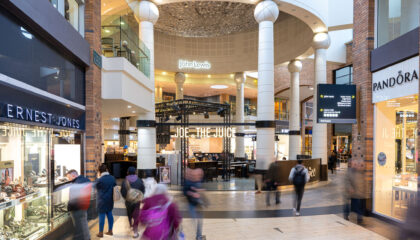
What measures can be taken to improve health and wellbeing in the workplace?
Vicky Cotton, ESG Director at Workman, asks the question. From air-purifying paint, to a nutritious lunch, to meditation sessions, Workman is deploying a range of healthy buildings programs for occupiers.
Here we outline 11 ways Workman makes buildings healthier, across its managed portfolio.
1. Start with a plan: create a health and wellbeing strategy
As the first step, asset, property and facilities managers should collaborate to develop and implement a strategy to improve health and wellbeing, as part of a wider ESG strategy. As outlined in the Better Buildings Partnership’s recently published Responsible Property Management Toolkit, this can be achieved by auditing the existing health and wellbeing credentials of the property and the benefits they provide, surveying occupiers to establish the health and wellbeing requirements and aspiration of different stakeholder groups, and consideration of certification of the property through schemes such as Fitwel or WELL, which can be conducted in conjunction with the Workman Wellbeing Asset Plan.
Having secured the UK’s first Fitwel certification for a business park, Arlington Business Park, Workman is the UK’s leading implementer of Fitwel. Workman recognises the value of Fitwel as a leading metric for optimising human health & wellbeing in real estate. Our adoption of this leading industry wellbeing standard, which is recognised as part of the GRESB sustainability benchmark, sends a clear signal to occupiers that wellness is a priority across the Workman-managed portfolio.
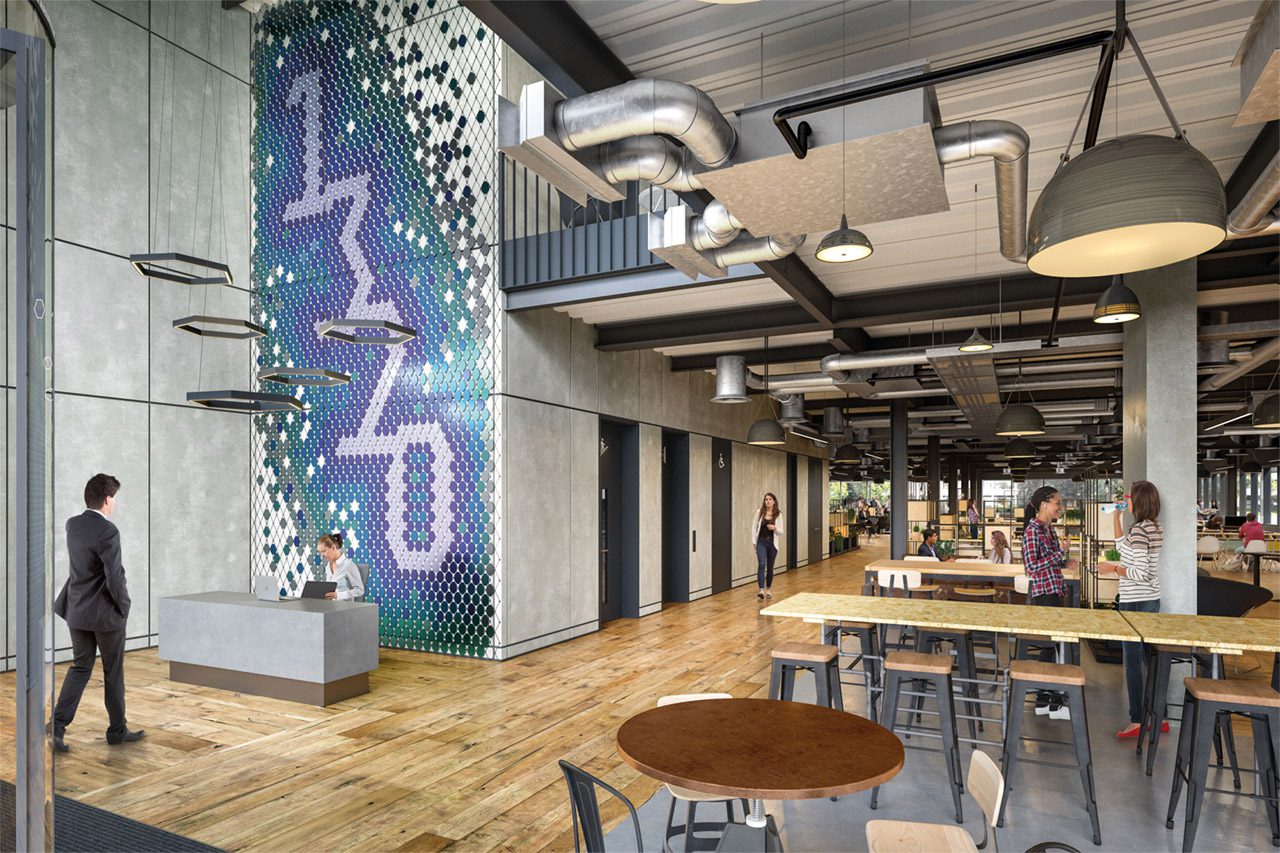
2. And breathe: improve indoor air quality
The average Brit spends 22 of each 24 hours indoors, equating to around 90% of their day. In modern office buildings, levels of pollutants can be two to five times higher indoors than outdoors. Good indoor air quality and ventilation rates are vital to deliver clean air, andbecame particularly important in the context of the pandemic. As an airborne virus, diluting the pathogen inside a building reduces risks. As such, ventilation has been highlighted as an essential way of reducing impacts and disease transmission by University of Cambridge researchers.
Companies should regularly review their air-conditioning systems to assess the need for servicing or adjustment. Building owners are encouraged to improve the efficiency of the filters serving their HVAC systems, so that they are effective.
Understandably, ventilation and indoor air quality (IAQ) are important concerns for employees prioritising clean air. This has led landlords to embrace technology for healthier workplaces with emphasis on building design for environmental health. Innovative solutions like UV light air purification, touchless fixtures, and advanced ventilation system filters are increasingly prevalent. Workman’s Intelligent Building Operating System (IBOS) empowers building owners to address indoor air quality. It does so by measuring CO2 and chemical pollutant levels and making adjustments. Additionally, it saves costs and reduces carbon emissions by optimising filter efficiency. Indoor air quality sensors, such as Awair, monitored by AirRated, are also gaining popularity.

3. Let there be light: consider exposure to natural light
It’s a depressing fact that on an average winter day, 90% of UK workers do not see any natural daylight. But it’s not just a major cause of the ‘winter blues’ or seasonal affective disorder (SAD). Research has shown that a lack of natural light within the built environmentis associated with myopia, or short-sightedness.
Conversely, exposure to natural light has well-documented health and wellbeing benefits. Therefore, building design should maximize the exposure to natural light within the interior of a structure. This can improve health outcomes for workers.
High levels of natural daylight were a priority for the Workman Building Consultancy team. They led the transformation of a former Farringdon warehouse to provide unique office space. As part of a whole-building refurbishment scheme, a fully glazed link-bridge was created. Part of a sleek, polished glass extension, it offers two storeys of additional light and airy office floorspace with high standards of indoor environmental quality.
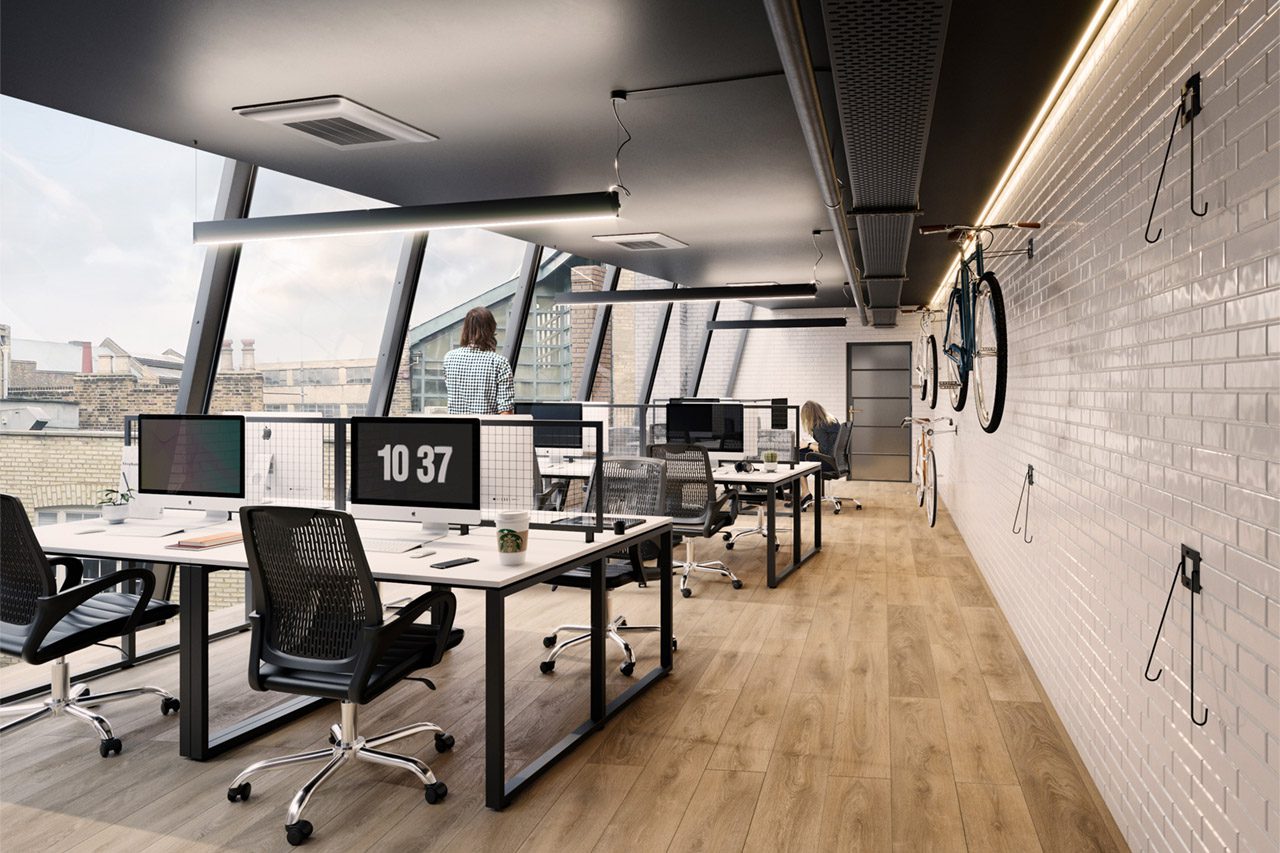
4. Build back better: choose sustainable materials
The selection of natural materials has long been associated with creating healthy indoor environments. Employees surrounded with natural wooden surfaces on average reported higher personal productivity and concentration, and were more likely to find their workplaces inviting and energising, shows research from Planet Ark.
What’s more, building materials such as Johnstone’s Air Pure bio-based paint (below) can help to improve indoor air quality. The paint, applied by Workman at a 17,000 sq. ft London office, contains active air purifying technology. It is proven to neutralise up to 70% of formaldehyde from indoor spaces. Additionally, it is made from 45% renewable raw materials for positive environmental impact.

5. It’s in our nature: create access to green and blue space
The pandemic underlined the importance of good quality green space for health and wellbeing, particularly in urban areas. The inclusion of nature within the built environment can contribute to happier, healthier communities, according to the UK Green BuildingCouncil’s climate change report ‘Nature-based Solutions for the Climate Emergency: The benefits to business and society.’
According to the UKGBC’s report, access to green space has been proven to encourage physical activity. It reveals that people living in greener areas were 24% more likely to achieve recommended levels.
Across the Workman-managed portfolio, onsite teams organise events to engage occupiers with the outside space available to them, through the provision of al fresco social events, deck chairs, walking or running trails, or outdoor sports or cinema events. At Birmingham Business Park, Workman’s onsite team organises regular biodiversity walks and ‘netwalking’ events, where employees are encouraged to spend time improving their wellbeing in nature.
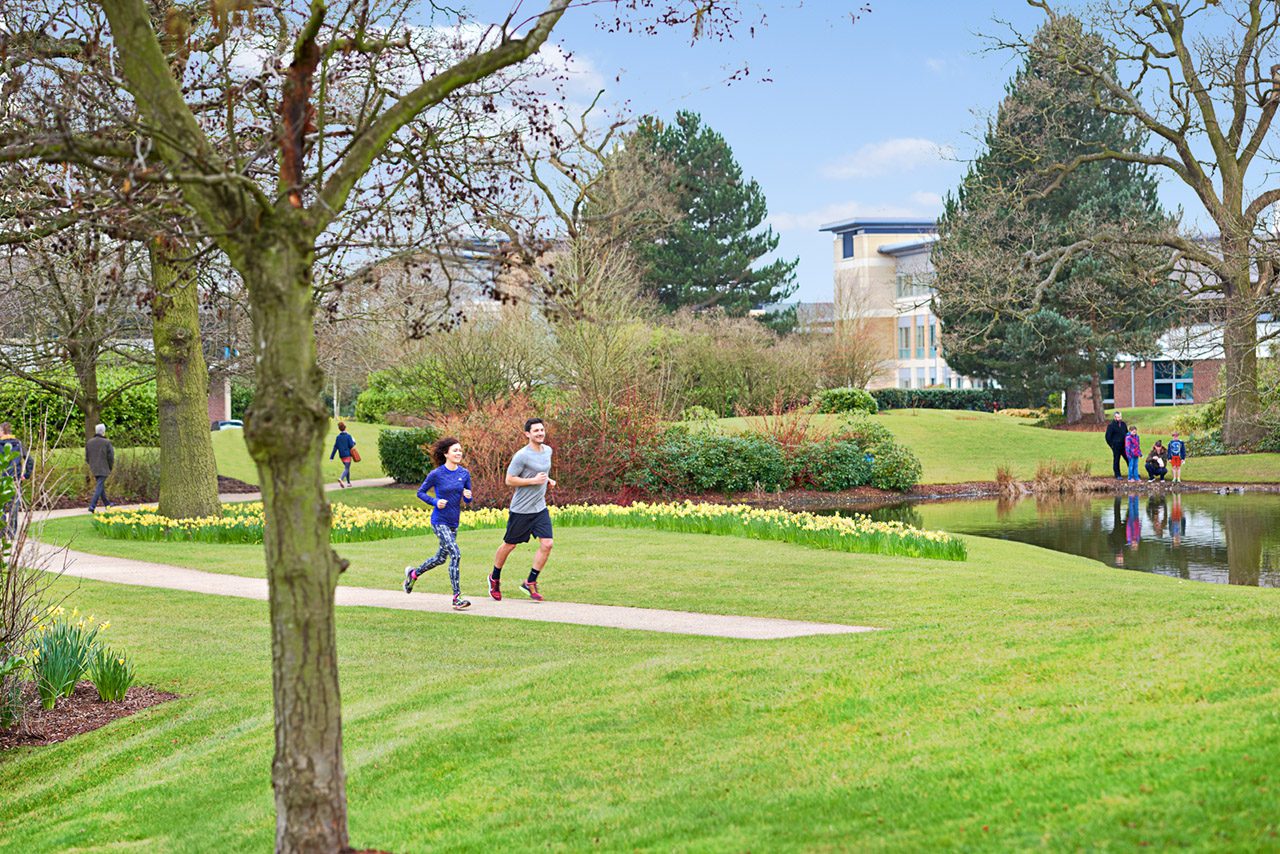
6. Don’t sweat it: provide exercise facilities
Just 34% of adults in England consistently meet the weekly recommended amount of physical activity (at least 150 minutes of moderate intensity activity a week or 75 minutes of vigorous intensity activity a week), says research from Preventative Medicine. Gym facilities at work don’t just mean fit and healthy employees. They can also translate to less-stressed and depressed employees, which is an attractive proposition for occupiers prioritising human health.
Workman-managed business parks including Croxley Park and Birmingham Business Park boast impressive fitness facilities surrounded by open green settings. But it’s also vital for more urban office spaces to provide exercise facilities to benefit occupant health.
At Republic, 650,000 sq. ft of office and retail space in London’s East India Docks, there are also two onsite gyms. They offer occupiers discounted membership, as well as a programme of wellbeing events including yoga and meditation. Another urban site, 220,000 sq. ft Anchorage at Salford Quays, features a dedicated wellness area. It regularly plays host to yoga classes for occupiers’ employees.
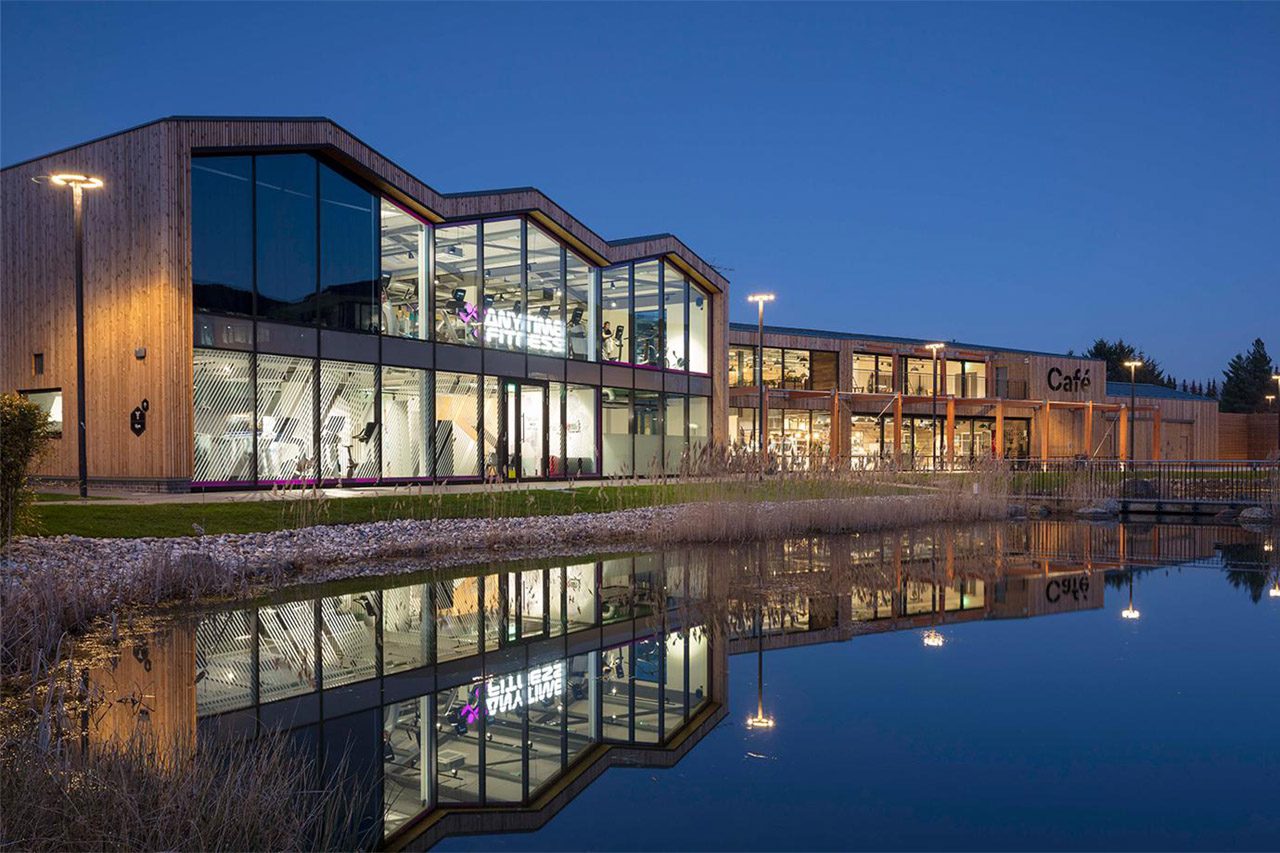
7. Life is a journey: organise active commuting
Active commuting, defined as walking, cycling, or jogging, is consistently linked with greater satisfaction and with boosting physical and mental wellbeing. So says research from the British Medical Council. Despite this, just 14% of commuters in England and Wales actively commute. They are often deterred from doing so by barriers in the built environment. Building owners and occupiers can promote active commuting and align with ESG goals by establishing or utilising local running and cycling routes. They can also provide facilities for securely storing bikes, changing, and showering at the workplace.
Workman’s Building Consultancy team project-managed the creation of state-of-the-art cycling facilities at Glasgow’s Skypark, which was awarded a CyclingScore Platinum rating for a best-in-class cycle-friendly infrastructure. The facilities at Skypark include 250 bike-parking spaces, e-bike charging points, 236 lockers, segregated showers, changing facilities, a drying room, and a dedicated cycle repair space. These amenities cater to occupants who opt for cycling to and from Skypark.
The facilities, says CyclingScore, means Skypark’s 3000-strong workforce is predicted to take 146 days’ less sick leave when 3% of staff cycle to work because cyclists take on average 1.3 days less sick leave than non-cyclists, based on a commuter-cycling and healthcare study led by Ingrid Hendriksen.
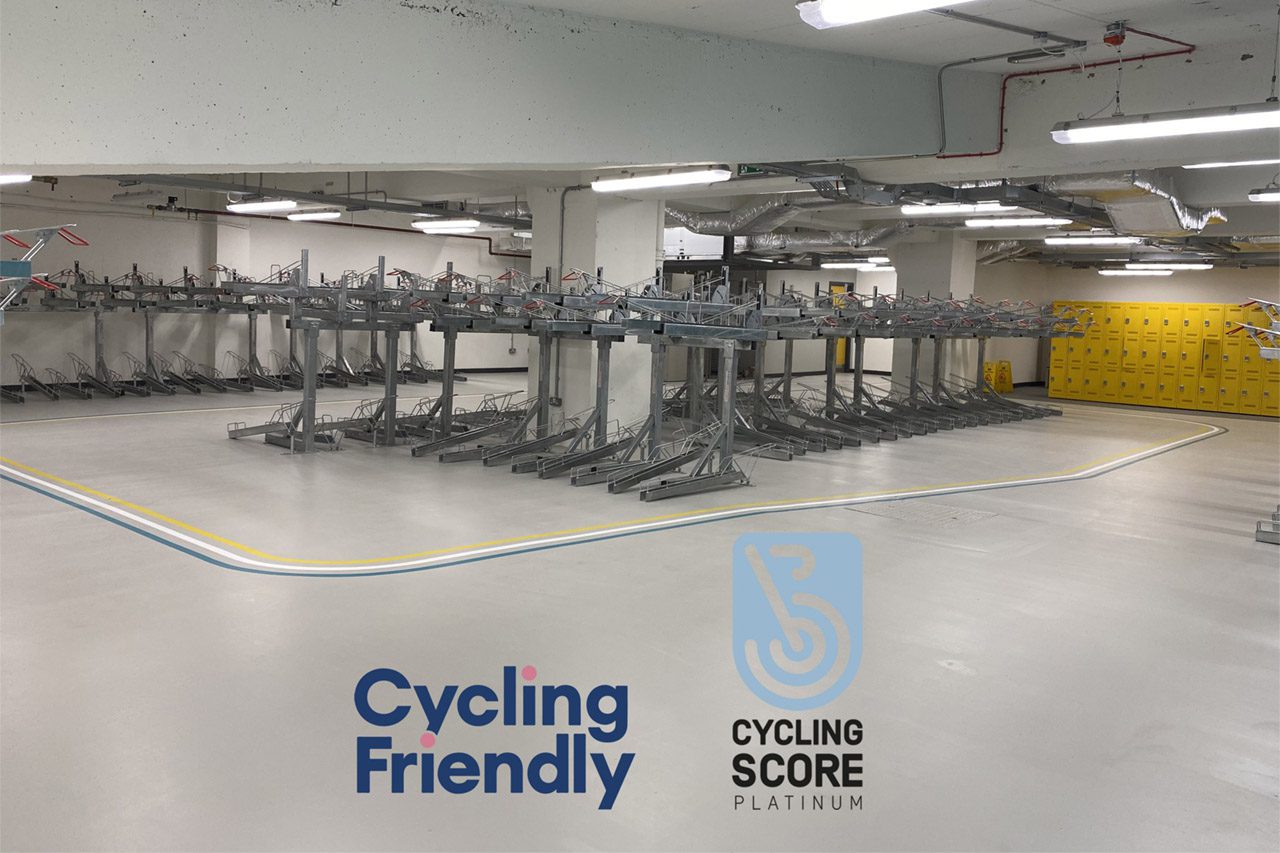
8. Get some headspace: support mental wellbeing
Poor mental health is a growing concern for many organisations in a variety of sectors, with Health & Safety Executive (HSE) figures showing that in the year leading up to 2019, a total of 602,000 workers experienced work-related stress, depression or anxiety; resulting in 12.8 million lost working days. Stress, depression or anxiety accounted for 54% of all working days lost due to ill health, says HSE.
In addition, there are growing concerns regarding presenteeism and the impact of poor wellbeing on morale, motivation, productivity and performance. Supporting mental health is therefore a key strategic consideration for all organisations; from both an ethical, sustainability and economic perspective.
Across the Workman-managed portfolio, healthcare initiatives like Mental Health First Aider training, mindfulness sessions, and meditation classes were available online throughout the pandemic. They are now also offered in person at sites, including Birmingham Business Park. In response to occupier feedback, the Workman onsite team has recently facilitated the creation of a multi-faith prayer room at London’s Republic.

9. Be part of something bigger: connect with the wider community
Whether local schools, colleges, community centres or charities, engaging with the wider community brings a sense of wellbeing to workspaces. At Croxley Park, educational and community-based events are held throughout the year as part of a lively social calendar including fireworks, Easter egg hunts and summer fêtes to networking business breakfasts, quiz and comedy nights and escape rooms.
This summer, the Workman onsite property management team collaborated with a local florist to create a large-scale event – albeit Covid-restrictive – in order to push its events programme into a new out-of-normal-working-hours phase, while supporting local business as a route to engage the wider community. The bouquet masterclass included pizza, a live comedian, music and a cocktail-making class.
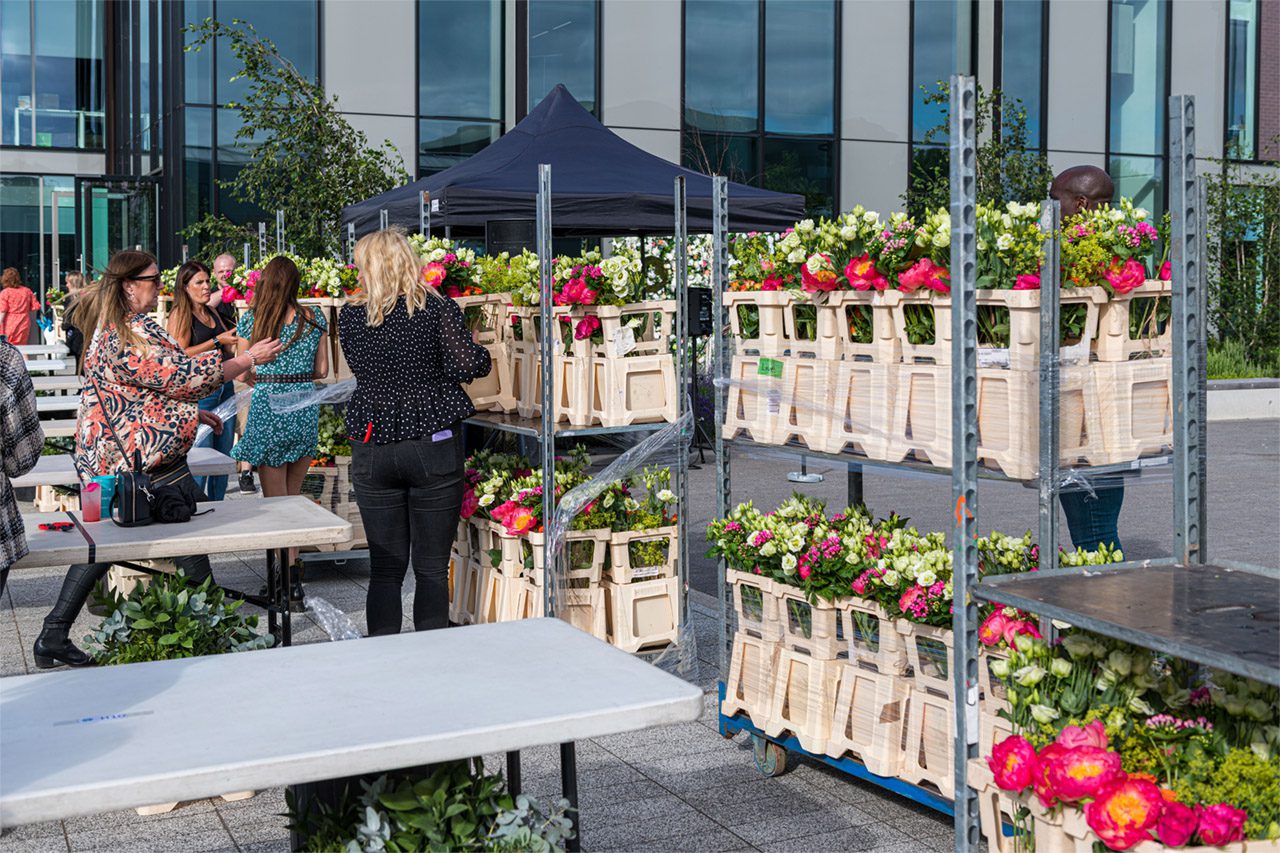
10. Nourish to flourish: Healthy snacks for work
Often referred to as the missing piece of the corporate wellbeing puzzle, nutrition can be neglected as occupiers focus on physical activity for occupant health. Yet poor nutrition has nearly three times the impact on health as low fitness, according to the Institute for Health Metrics.
Eating well in the workplace can have a significant impact on overall health and wellbeing. Nutritious foods can improve concentration and cognitive function, boosting an employee’s workplace performance. Optimal nourishment can raise productivity levels by 20%, according to The World Health Organisation.
Providing healthy food options in the workplace is an effective way to get employees to stick to nutritious eating habits. These benefit both the individual and their employer. Healthy foods provide employees with vitamins their brains need to function properly, creating happier and more productive employees. People with unhealthy eating habits are 66% more likely to demonstrate poor productivity at work, says a study by Brigham Young University.
Nutritious food provided in the workplace is an integral part of the Workman property management strategy. Onsite café menus at locations such as Anchorage, Arlington Business Park, Republic, and Croxley Park are carefully designed by building owners and property managers to include freshly prepared salads, soups, tapas, sushi, and healthy breakfast options. Global street-food pop-ups are also organised throughout the year, ensuring a variety of nutrition. Most importantly, food offerings are competitive against high street prices, offering loyalty schemes and value-for-money meal-deals.

11. Shout it out: engage occupiers in workplace initiatives
At Workman, the priority is providing the right services for each property and its occupiers. The busiest social calendar is of little use if events organised fail to appeal, so listening to occupier preferences is key. Regular surveys, along with feedback from organised activities, help with this.
Understanding occupiers’ requirements from the employee retention and company image perspective is important, so Workman property managers marry these needs with working practices, in order to fully exploit each amenity’s potential for environmental health.
Encouraging participation in health initiatives is essential. Building awareness allows occupants to recognise employer commitment. This ensures they utilise available facilities and programs.
Posters, screens, and pop-up booths are onsite communication tools. Additionally, Workman properties provide interactive mobile apps. These apps offer updates on news and events. They include access to various services like transport, booking, and amenity timetables.
As detailed in the Better Buildings Partnership’s recently published Responsible Property Management Toolkit, occupier engagement is the key to success. It should also include training on the use of defibrillators or the safe and effective use of fitness equipment.
The BBP recommends regular monitoring, including the development of metrics to measure the take-up and impact of health and wellbeing initiatives. This enables asset and property managers, as well as occupiers, to evaluate ongoing suitability.



